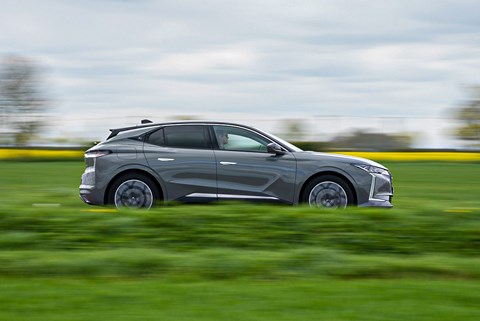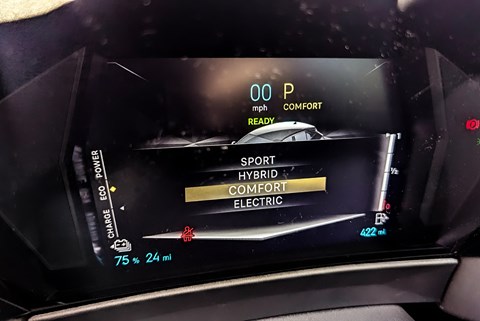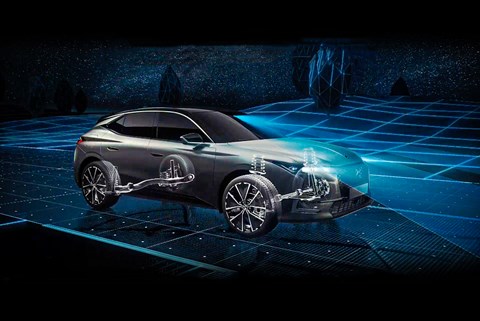► CAR tests DS’ Active Scan ride tech
► Active damper suspension scans the road
► Available on DS 4 hatch, 7 SUV and 9 saloon
It wasn’t the first Citroën to get Hydropneumatic suspension, but the classic DS of 1955 brought the innovative system to the world’s attention. So it’s appropriate a suspension system that’s arguably its spiritual heir is being used across most of the line-up of Citroën spin-off brand DS.
Whereas the Hydropneumatic system combined hydraulics and pneumatics, often with ride-height adjustment and self-levelling capability, today’s DS is going big on Active Scan Suspension.
The idea of Active Scan Suspension is simple, even if the execution is not, involving considerable processing power. It reads the road ahead to pre-emptively prepare for the worst ruts and biggest undulations. The tech aims to work much like Rolls-Royce’s ‘magic carpet’ ride setup that also scans the road ahead.
Key to the technology is a camera built into the top of the windscreen, plus four height sensors and three accelerometers, to gauge steering angle, speed and braking. The camera scans the road (between five and 25 metres ahead), and prepares the wheels for upcoming lumps and bumps. It’s active between 9 and 81mph. Cars with Active Scan Suspension have an additional drive mode: Comfort.
It’s available on three out of four of the DS model range: the 4 hatchback, 7 SUV and 9 saloon. On the 4 and 7, it’s confined to the top-spec Opera version; with the 9, it’s standard on every car.
Opt for Active Scan Suspension on the DS 4 – the cheapest way to get the tech on a new car – and you instantly set your hatchback apart from the many other Stellantis products using the EMP2 platform (like the Vauxhall Astra, Peugeot 308 and Citroën C5 X.

We tested an Active Scan Suspension-equipped DS 4 back-to-back with our long-term test DS 4 (pictured above), which doesn’t have it, and we found that it’s generally softer.
Over an identical road loop that included urban streets, fast motorway stretches and twisty country roads, the car with Active Scan Suspension was definitely the softer-riding option. You almost could believe it’s on air suspension, when in fact it has traditional coil springs; the active damping helps get the most from the hardware.
We found that it works best with the car’s low-speed ride, as ruts and potholes are well glossed over despite our test car running on large 19-inch wheels. Even the thuds emitted when driving over them felt quieter.
As for higher speeds, like at a motorway cruise, those bumps and lumps nigh-on disappear. It’s only with larger or deeper undulations that the Active Scan tech starts to make the 4 wallow a little, producing a floaty feel.
Overall, though, it’s an impressive bit of kit.
DS Active Scan suspension: how it works
Flick the switch

Active Scan-equipped cars include an additional Comfort setting in the drive mode selector – if left unselected, the suspension system remains passive.
Eye on the road
A separate camera in the windscreen’s sensor bank scans the road ahead, looking out for imperfections big or small – it works up to 81mph.

On its toes
Each damper then prepares for ruts and lumps, individually softening and firming up to level out the ride; it can feel a little floaty over big undulations.
DS Active Scan suspension: does it work?
Yes. It’s almost as if you’ve specified your DS with air springs, for all of the handling benefits and drawbacks that provides. You need the top-spec version of the 4 or 7 to get it, though.